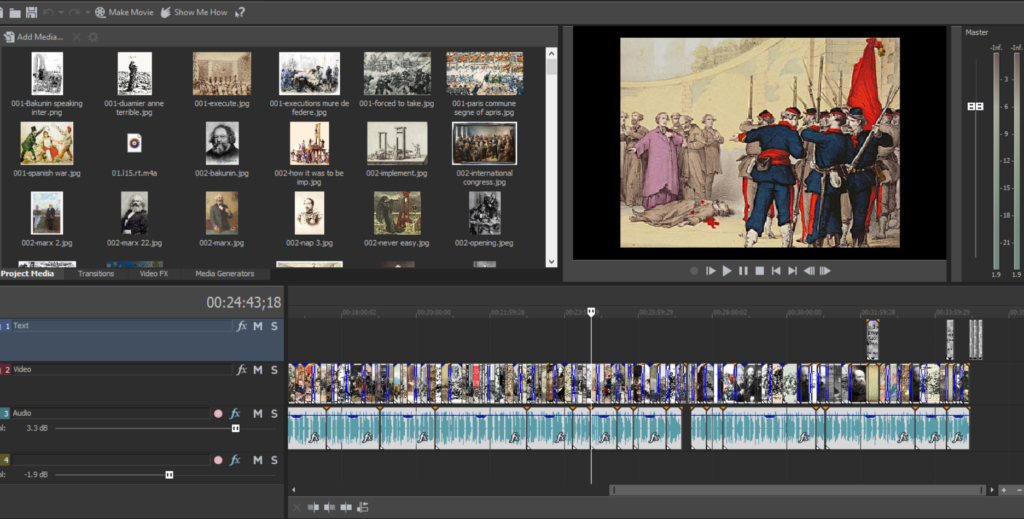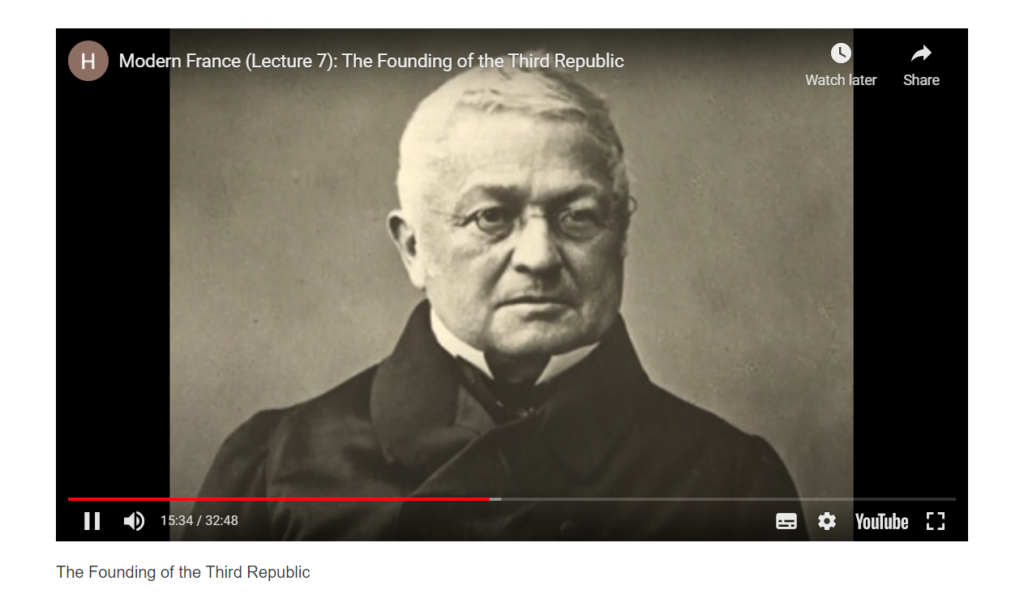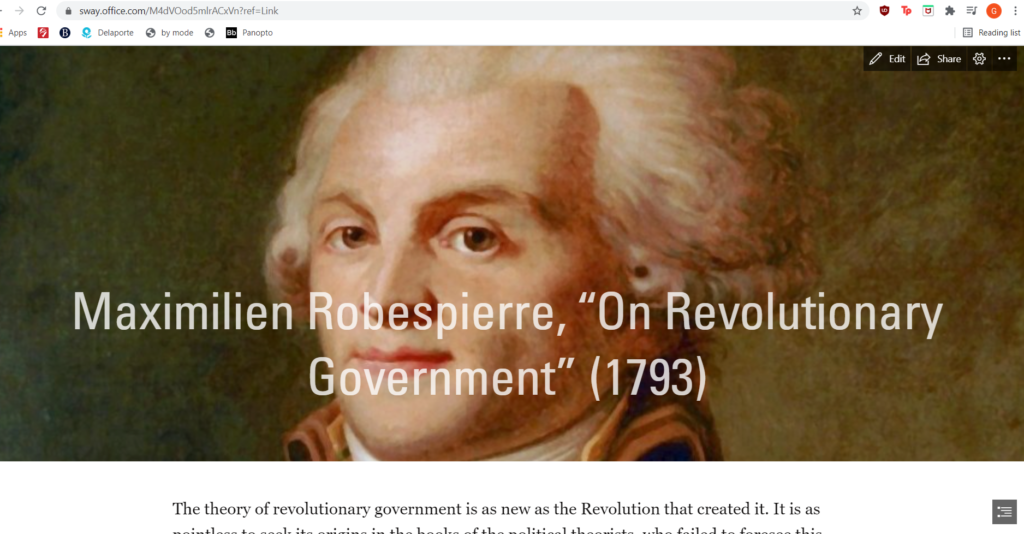Gavin Murray-Miller
When the pandemic hit, I, like most lecturers, grappled with a few basic questions: how was I to transpose what I did in the classroom onto a virtual learning environment? Was it even possible to replicate the work done in the classroom through remote teaching? In mulling over these questions, I soon realized a different approach was needed. Remote teaching shouldn’t entail directly translating what we do in the classroom to a virtual learning environment. It requires rethinking how we communicated with students and repositioning ourselves as both educators and content providers.
The expression “content provider” immediately calls to mind YouTube videos featuring impish cats or overly circulated memes that eventually appear in our Facebook feed. It is not necessarily a term that one might associate with higher education, where experts prefer to speak of massive open online courses (MOOCs) or virtual learning environments (VLE). However, these weighty technical terms obscure certain similarities with the digital environment that most students participate in on a daily basis. Outside the classroom, students are constantly engaging with digital media. They watch and follow YouTube channels, post in subreddits, comment on articles, and share and repost photos, videos and memes on various platforms.
In a world in which remote teaching and VLEs become the norm, educators, whether we like it or not, have to compete with these forms of entertainment. It is an uphill battle to say the least. In reconfiguring my class for remote teaching, my goal was to try and incorporate some of these techniques into the new learning environment we faced.
To do so, I immediately turned to the platforms with which students are familiar. Luckily there is a wide array of inexpensive and even free software and internet platforms available to educators. Blender, WordPress, YouTube, and Microsoft products are all at our disposal, and they offer us ways of creating bespoke and engaging learning environments for students. Setting to the task, I began recording lectures with the mindset of being a “content provider.” For me, this meant transforming class lectures into documentary-style videos that could hopefully hold student’s attention while covering complex subjects and theoretical questions.

Preparing a lecture on the Paris Commune with video editing software
Using Vegas Movie Studio, I was able to incorporate an array of visual and auditory sources into my lectures that extended well beyond what the typically Power Point presentation could offer. Hosting these videos on YouTube made them easily accessible to students and offered them features they were accustomed to such as “liking” videos and commenting on content. These lecture videos, covering complicated subjects such as revolutionary violence or nationalism and nation-building, were aimed at providing short, fast-paced lectures that would give students a broad overview of the primary issues and prepared them for the more detailed discussions that would take place in the weekly seminars held through Zoom.

A video lecture for the module Modern France
Organizing class materials was a major consideration. While platforms like YouTube were helpful in delivering content, they were not helpful in providing a central hub where students could access everything needed for class sessions. Therefore, I turned to WordPress and created a free website where videos, reading lists, and primary sources were all made available to students. I purchased the domain name historyclass.online, believing a convenient URL would be easier for students to locate the page, although using WordPress on its own would easily suffice. It is a user-friendly platform that hosts websites, and with WordPress I was able to set up individual pages for each of my modules.

The historyclass.online website created with WordPress
For example, my module Europe and the Revolutionary Tradition contained the course description and hosted all the lecture videos. The lectures on The Revolutions of 1848 or Women and the French Revolution reflect a typical “class” with videos, reading lists, and primary sources all available to visitors.
Keeping all the content contained within a single website and creating pages for each class session provided an organized and easy-to-use format that kept them on track throughout the semester. I also used Microsoft Sway to provide students with links to primary sources. The program not only allows you to create text and multimedia websites, but also contains features which allow you to share documents with students, create discussion chains, and monitor student commentary on texts.

A primary source prepared with Microsoft Sway
Remote teaching made me aware of the wealth of resources we as educators have at our disposal for modelling virtual learning environments. Moreover, free platforms such as YouTube and WordPress are designed to be user-friendly and intuitive, entailing a rather mild learning curve. More to the point, it permitted me to be in complete control of the content I delivered and how it was represented, allowing for a custom-made module accessible beyond the students I worked with this year.
While many lecturers are looking forward to returning to the classroom next year as social distancing measures ease, it is worth considering whether we will, in fact, be returning to pre-pandemic norms. For my part, I intend to retain many of the “emergency measures” I adopted this past autumn as I scrambled to accommodate the circumstances surrounding remote teaching. Delivering lectures through online platforms and running a module website has the potential to free up time in the classroom for more detailed exercises and discussions. It can also provide new opportunities for considering innovative assessments beyond the standard research essay. The delivery of our modules, just as much as the content, can have pedagogical functions. By teaching students how to use video-editing software and web platforms as part of their assessment, we can encourage them to become content providers themselves. These are the types of transferrable skills which we often seek to promote in our teaching.
The global pandemic deprived us of the familiarity of the classroom and our habitual teaching methods, yet this does not mean it will be back to business as usual. Hybrid learning has many advantages, and I honestly am looking forward to exploring them when we return to campus.
Gavin Murray-Miller is a Senior Lecturer in History at Cardiff University


